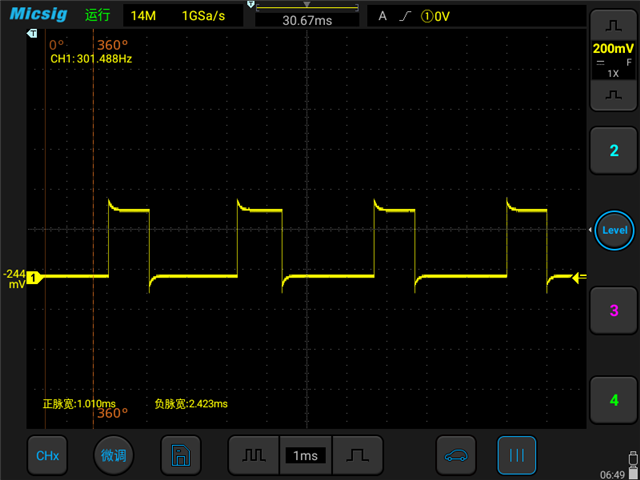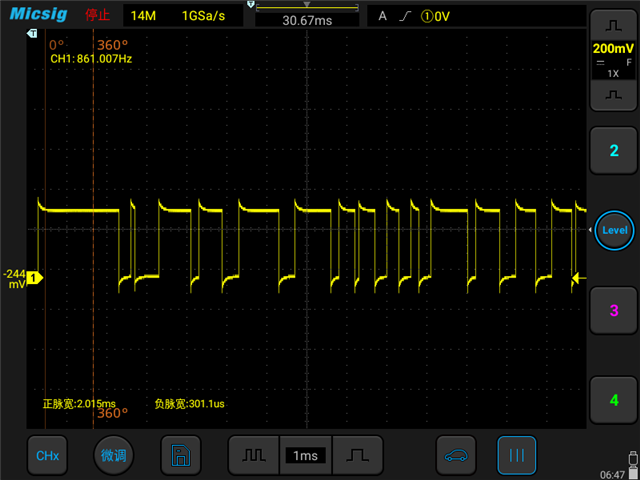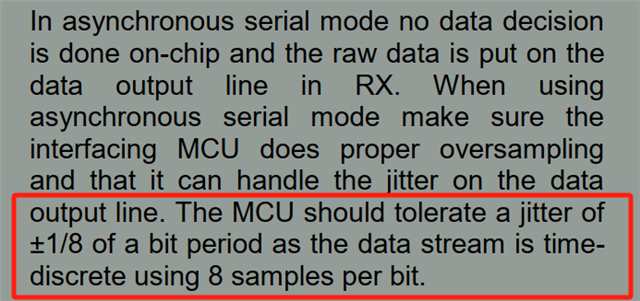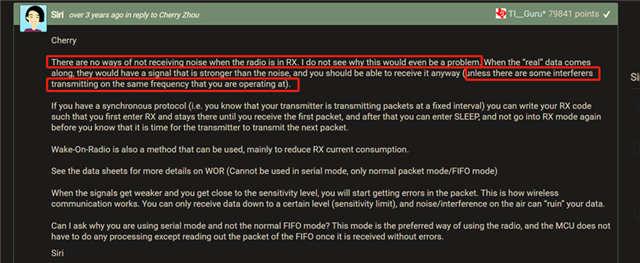Other Parts Discussed in Thread: CC1101
I configure the GDO1 as the Serial Data Output, that is :
CC1101_Write_Reg(CC1101_IOCFG1, 0x0D );
and then I can detect the signal by a oscilloscope.
With the TX transmission present, the signal waveform received looks normal, just the same as what I transmit in Tx:

but when I powered off the transmission device, the siganl received on GDO1 looks like below:

I have read some posts, which mentioned Carrier Sense Threshold, and I tried,but cannot eliminate the noise signal.
Can anyone help me with some insights? many thanks in advance.





